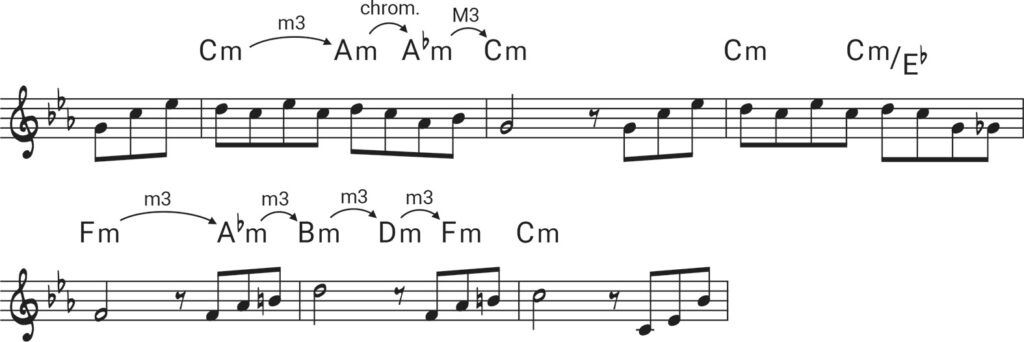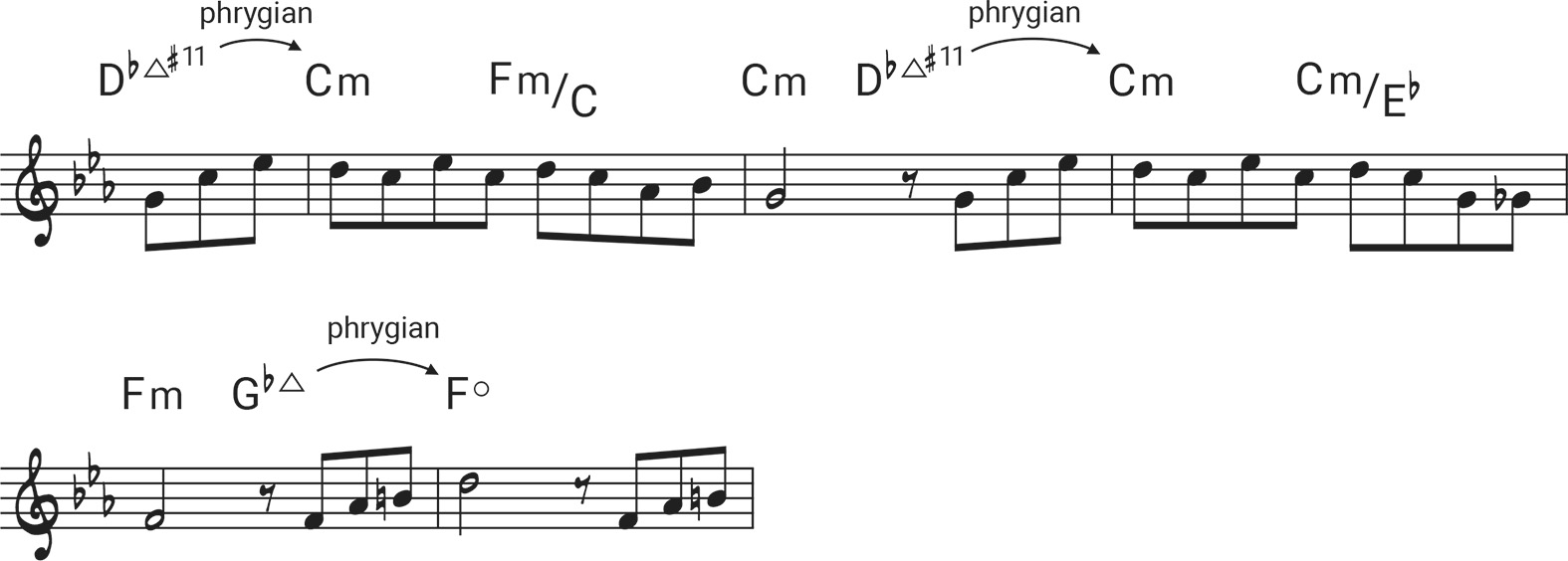When it comes to musical compositions that are both evocative and iconic, few can rival the enduring allure of Nino Rota’s “Love Theme from The Godfather.” As a pianist, I found myself irresistibly drawn to this timeless melody and the rich emotive harmonies. It’s a simple but incredibly powerful melodic motif, which presents a fantastic opportunity for a reharmonization and harmonic exploration. In this blog post I’ll be showing you how to transform the Godfather Theme and infuse it with some hip chords.
But first, let’s give the original a listen:
Basic Chords
Below is the lead sheet of the melody with chords. They’re relatively straightforward, starting at the tonic (Cm), moving to the subdominant (Fm), using an inversion (Cm/Eb), diminished chord (Fo), and finally the dominant (G7) to bring us back to the tonic:

Parallel Minor Chords
Next, let’s try to make this more interesting. This theme is starkly minor — the melody prominently outlines the chords Cm and Fm. All the harmonies are throughly diatonic, meaning: within the key of the piece, C minor.
What if we doubled down on this minor character, but expanded it to non-diatonic (meaning: not within the key of C minor) minor harmonies? One way to do this is to play parallel minor chords — minor chords that are parallel to each other but don’t necessarily fit within the key that we’re currently in. For example, we could start with our tonic, C minor, and move it down in minor thirds:

If you play this, you’ll notice that these harmonic movements sound extremely jarring. This is because none of these harmonies, except the first one, fit within the key of C minor. This can be used to a dramatic effect in your reharmonization, which we’ll demonstrate a little later.
Let’s try a few other parallel movements. This one is moving down by half step, so chromatically:

Or we can move our harmonies in major thirds:

Now, if we apply these parallel harmonies to the Godfather Theme, it could sound something like this:

Doesn’t this completely transform the harmonic pallet of the piece? The non-diatonic minor chords are pretty jarring, and add a layer of surprise, while still maintaining the dark and sorrowful character of the original composition.
It’s always a bit of a puzzle to fit these harmonies. Since they’re often not within the key, only a few melodic notes will fit. Experimentation is your friend here: keep trying to fit non-diatonic minor chords until you find some that fit well.
Phrygian Chords
Another great way to alter the character of a minor piece is by using the phrygian mode. In the key of C minor, this would mean playing a ♭II chord, so a Db major chord. In F, this would be a Gb major chord. Let’s add those in wherever possible:

Tritone Substitute Chords
Lastly, a technique that I almost always end up using in my reharmonizations are tritone substitute chords. They’re extremely useful, as they carry a lot of tension and can propel your harmonies forward. If you’re not familiar with this techqniue, I recommend you checking out my blog post How to Use Tritone Substitute Chords.
Here’s the last phrase of the opening melody, using tritone substitute chords (t.s.V):

Note that tritone substitute chords are not limited to just dominant 7th chords. You can also use major 7th chords (as in my tritone substitute blog post) or sus4 chords, as in the example above. Effectively, the t.s.V chord ends up being a half step above each target chord, and then you can use whichever chord quality fits best with the melody.
The Godfather Theme, Reharmonized
When we put it all together, using parallel minor chords, phrygian chords, and tritone substitute chords your final reharmonization could sound something like the video below:
In this reharmonization, I’ve also used additional techniques such as inversions, passing chords, and diminished chords. If you’d like a short introduction to these kinds of reharmonization techniques, makes sure to download my Reharmonization Quick Guide here.
Let me know in the comments below what you think of these parallel minor chords, phrygian harmonies, and tritone substitutes, and wether you’ve used them yourself!
Hope you enjoyed this quick reharmonization tutorial.

